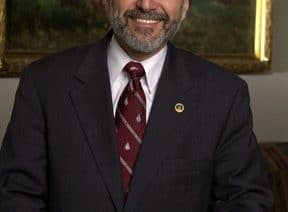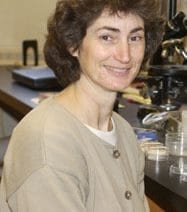Press Room
A Gulf Stream and ocean circulation expert has been named second director of the Ocean and Climate Change Institute at Woods Hole Oceanographic Institution (WHOI). Physical Oceanographer Terrence Joyce will assume his new position on January 1, 2005. He succeeds…
Imagine a lake three times the size of the present-day Lake Ontario breaking through a dam and flooding down the Hudson River Valley past New York City and into the North Atlantic. The results would be catastrophic if it happened…
Woods Hole Oceanographic Institution (WHOI) President and Director Robert Gagosian has been appointed to the U.S. National Commission for the United Nations Educational, Scientific and Cultural Organization (UNESCO). The National Commission, re-established by the U.S. Department of State on October…
A Woods Hole Oceanographic Institution (WHOI) biologist has been honored for her contributions to graduate education with the Institution’s first Arnold B. Arons Award for Excellence in Teaching, Advising and Mentoring. Dr. Lauren Mullineaux, a senior scientist in the Biology…
Five researchers have been recognized by the Woods Hole Oceanographic Institution (WHOI) for their contributions to ocean sciences research and education. All will receive funding provided by the endowed awards to support their research over periods of three to five…
Three new deep-sea hydrothermal vent fields were discovered in September 2004 in the Lau Basin in the western Pacific between Tonga, Fiji and Samoa and were geologically and biologically mapped by the Autonomous Benthic Explorer (ABE), one of WHOI’s autonomous…
Cabled ocean observatories, like the Martha’s Vineyard Coastal Observatory (MVCO), and new sensors like the Flow Cytobot are enabling scientists to study plankton community structure and processes with unprecedented detail. MVCO is connected to shore by a fiber optic cable…
Reconstructing the history and intensity of hurricanes is useful when assessing future risks of these extreme events in coastal regions. Previous studies of North Atlantic hurricane activity have identified many of the environmental factors that presently influence tropical cyclone activity.…
Like the sailing vessel used by Captain Joshua Slocum to sail solo around the world 100 years ago, another ocean-going vehicle is making history. A small ocean glider named Spray is the first autonomous underwater vehicle, or AUV, to cross…
Salps, members of a large group of free-swimming, gelatinous organisms collectively known as jellies, are more common than previously thought in the waters around Antarctica. Woods Hole Oceanographic Institution (WHOI) scientists are studying the role of these fragile creatures in…
Institution researchers will spend the next three months in Papua, New Guinea tracking clownfish, the same species made popular in the animated film “Finding Nemo,” as part of population studies. The team will tag all the embryos produced by approximately…
One of the largest known mineral deposits in the deep sea, the Tag hydrothermal site on the Mid-Atlantic Ridge (MAR) in the North Atlantic Ocean, was the subject of a recent month-long cruise aboard the WHOI research vessel Knorr. Institution…
Oceanographers will soon be able to sit in their labs ashore and communicate with instruments in the water at ocean observatories around the world, enabling researchers to direct instruments to respond to recent events like hurricanes and earthquakes in that…
Noted nature author Carl Safina will present a lecture titled “Eye of the Albatross” at 4:00 p.m. Tuesday, September 21, in Redfield Auditorium of the Woods Hole Oceanographic Institution (WHOI), 45 Water Street, Woods Hole. The lecture is free and open to the public.
Sea level rise, eroding coastlines and increasing economic impact from severe storms on coastal communities are all part of studies underway at the Institution’s Coastal Ocean Institute. Climate researchers note that 2004 has been an unusually active hurricane season in…
Contrary to popular belief that marine mammals have a poor sense of smell, sea otters may have a nose that can actually help them distinguish between contaminated and safe abalone and clams, some of their favorite foods. Woods Hole Oceanographic…
The Remotely Operated Vehicle (ROV) JASON completed its 100th dive August 1 in Adak Canyon in the Aleutian Island chain as part of the Aleutian Coral Research Expedition (ACRE), funded by the NOAA’s West Coast and Polar Regions Undersea Research…
Arlington, VA –After 40 years of scientific research that led to the discovery of new life forms, helped confirm the theory of plate tectonics, and enthralled schoolchildren around the world with seafloor images and video, the research submersible Alvin will…
Monitoring earthquakes and changing ocean conditions, and adapting experiments to those changes, will now be possible with a new type of acoustically-linked moored observatory developed by WHOI scientists and engineers with colleagues at the University of Washington. The new observatory…
WHOI scientists have been sampling a coastal pond as part of a study of the effects of nutrients on toxic micro-algae that frequently contaminate shellfish in the pond and nearby marsh system with potent neurotoxins. The methods and approaches used…


